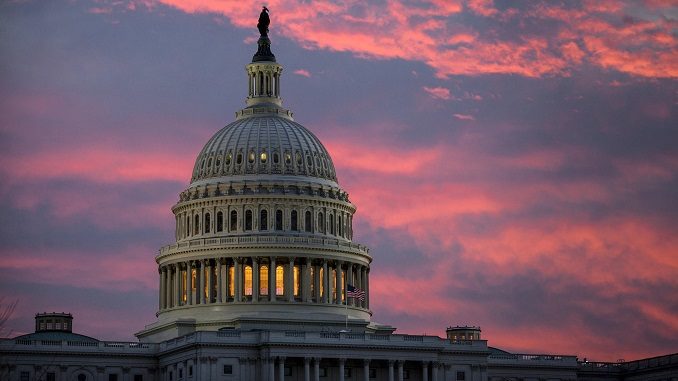
House and Senate policy makers reached a tentative agreement on a farm bill Wednesday, advancing the critical agricultural package after months of stalled negotiations, Wall Street Journal reported.
Sen. Pat Roberts (R., Kan.), chairman of the Senate Agriculture Committee, said Congress is nearing passage of the bill, adding that the Congressional Budget Office must prepare a cost estimate, or score, on the legislation – which could add up to nearly $900 billion over a decade—before lawmakers reach a final agreement on the bill.
“There’s still some things out there that people have to agree on. We’re not in a place where I can say that there’s full agreement. We’ve got scores, we’ve got items to talk about. But I think we’re close,” he said.
Lawmakers for months have been deeply divided over the farm bill, which funds crop insurance and farm subsidies, as well as programs to help low-income people pay for groceries. The House and Senate had each passed their own version of the legislation, and lawmakers had struggled to reconcile the differences between the two. Lawmakers and their aides were careful on Wednesday not to discuss specifics of the compromise, which will need to pass each chamber, the Journal adds.
“We’re in a very positive place. They’re now just getting CBO scores to make sure numbers add up. And that will take a while,” said Sen. Debbie Stabenow (D., Mich), the ranking member of the Senate Agriculture Committee.
A sticking point in negotiations had been the food-stamp program, which accounts for about 80 percent of the bill’s cost. In June, the House passed a GOP-written bill that proposed tightening work requirements for Americans receiving food stamps. Democrats rejected the provision, which came amid a broader push to overhaul welfare programs by House Speaker Paul Ryan of Wisconsin, who is retiring this year.
Later that month, the Senate passed a bill with bipartisan support that left out the controversial requirements. The two bills also diverged on agricultural policy. The Senate’s version sought to limit eligibility for crop subsidies, while the House bill included provisions that could expand eligibility while cutting funding for conservation programs.
A final hiccup in the talks had been forest management, with Republicans advocating to give the federal government more latitude to thin forests to mitigate wildfires. Democrats had called the changes overreaching and warned they could damage natural ecosystems, the Journal explains.
The potential deal comes at the end of a tumultuous year in the Farm Belt. Farmers this year harvested what is estimated to be the largest soybean crop in history and the second-largest corn crop. That is keeping a lid on commodity prices and pressuring farm incomes, which are forecast to fall 13 percent in 2018, according to the U.S. Department of Agriculture. The declines extend a multiyear slump in the agricultural economy that has forced some farmers out of business.
Meanwhile, tariffs imposed by the U.S. on key agricultural customers such as China have sparked retaliatory duties that are changing the flow of farm goods, including soybeans and pork, around the world and pinching farmers’ profits. The USDA has pledged billions of dollars in relief payments to boost farmers’ finances, but many say the funds won’t make up for lost sales to China and other foreign markets they were counting on to soak up their massive crops and meat production, the Journal notes.

Be the first to comment